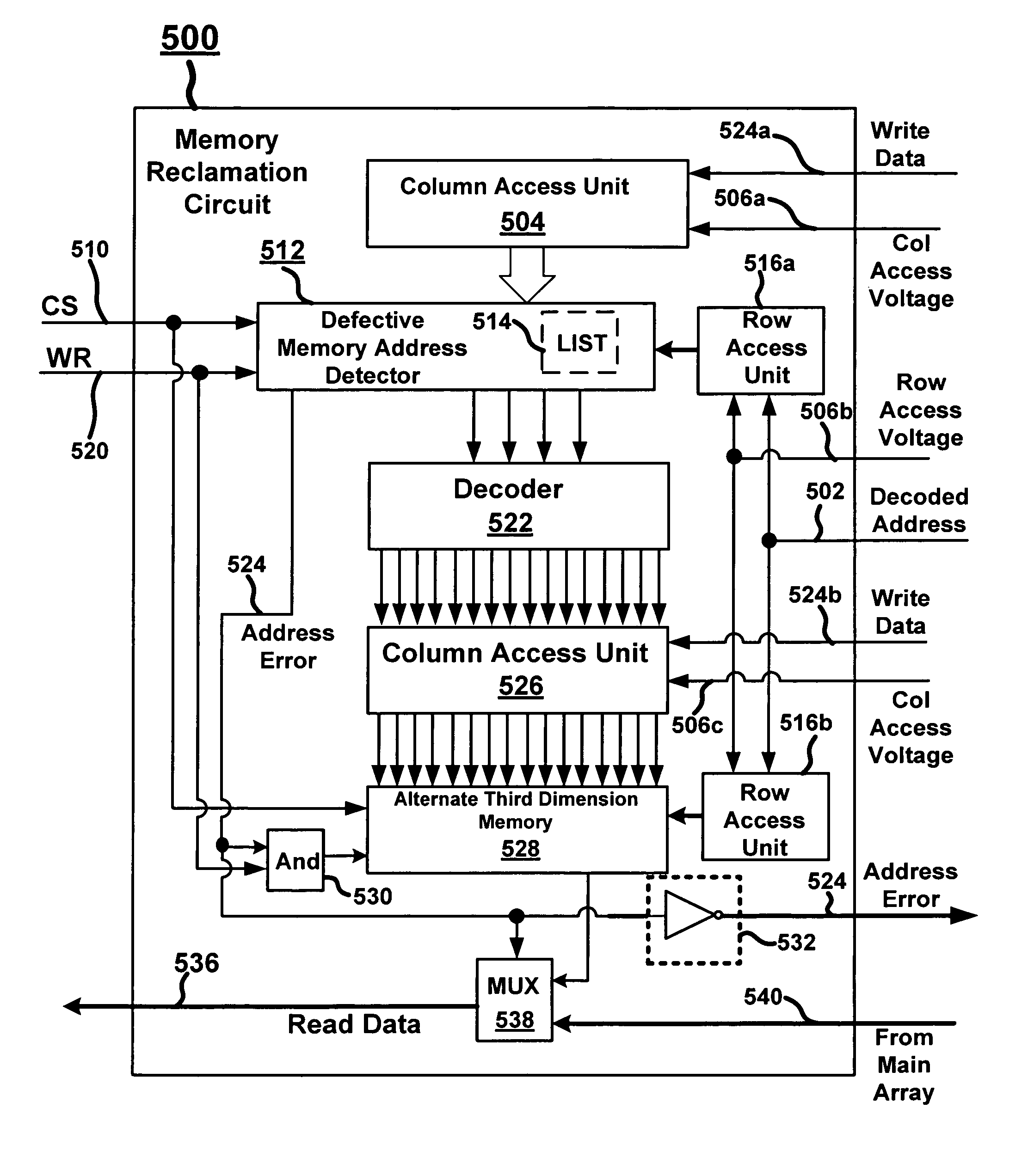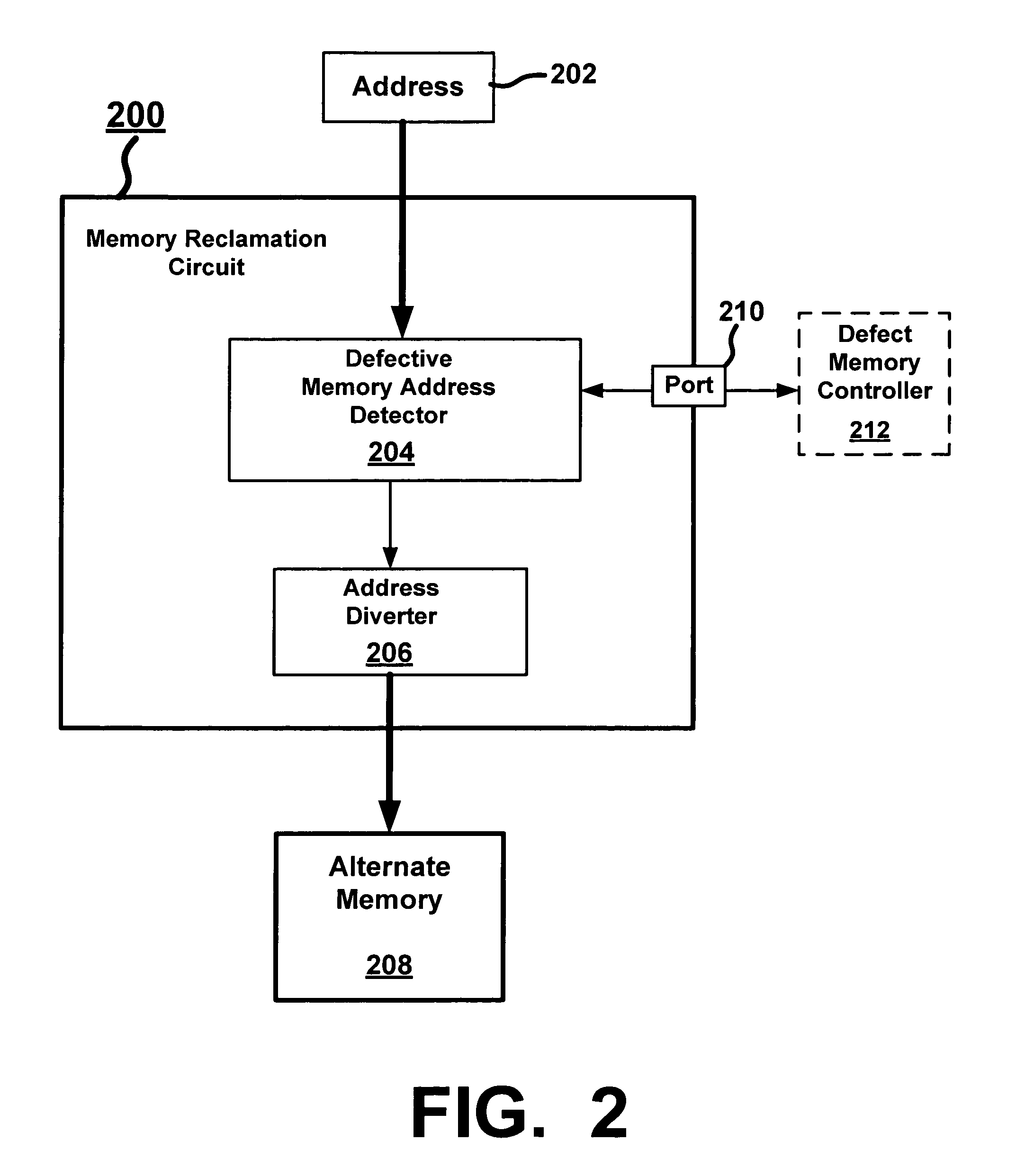Integrated circuits and methods to compensate for defective memory in multiple layers of memory
a technology of integrated circuits and memory, applied in the field of data storage and computer memory, can solve the problems of affecting the use of the inability to use the entire memory array, and the memory density of higher density,
- Summary
- Abstract
- Description
- Claims
- Application Information
AI Technical Summary
Benefits of technology
Problems solved by technology
Method used
Image
Examples
Embodiment Construction
[0017]FIG. 1 illustrates an integrated circuit implementing a memory reclamation circuit configured to compensate for defects in a memory composed of multiple memory layers, according to at least one embodiment of the invention. Integrated circuit 100 includes a memory reclamation circuit 104, a memory 110 including multiple memory layers 112 formed on top of each other (e.g., in the Z dimension), alternate memory 170 and a logic layer 120. Memory 112 is configured to reclaim memory that otherwise would be unavailable due to, for example, defects. As shown, multiple layers of memory 112 can include subsets 118 of alternate memory 170, each including any number of memory cells that operate as substitute memory for defective memory cells. In one embodiment, at least one memory cell in a subset 118 of memory cells can reside in a different plane in memory 110 than at least one defective memory cell. For example, one or more memory cells 132, which form a subset 118 of alternate memory ...
PUM
 Login to View More
Login to View More Abstract
Description
Claims
Application Information
 Login to View More
Login to View More - R&D
- Intellectual Property
- Life Sciences
- Materials
- Tech Scout
- Unparalleled Data Quality
- Higher Quality Content
- 60% Fewer Hallucinations
Browse by: Latest US Patents, China's latest patents, Technical Efficacy Thesaurus, Application Domain, Technology Topic, Popular Technical Reports.
© 2025 PatSnap. All rights reserved.Legal|Privacy policy|Modern Slavery Act Transparency Statement|Sitemap|About US| Contact US: help@patsnap.com



